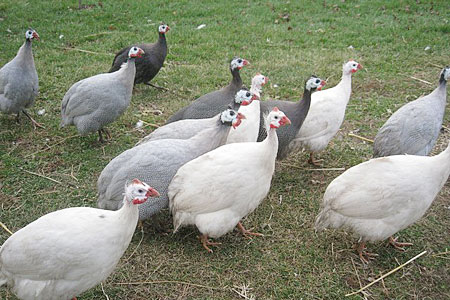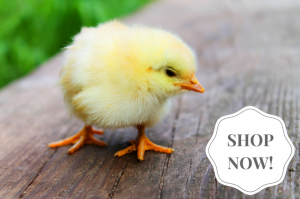
Guinea fowl are terrific foragers that wander around gobbling up ticks and other harmful insects. They are also wonderful watchdogs, noisily sounding an alarm whenever they detect something amiss. If you’re thinking of adding these unusual birds to your flock, the first thing to understand when selecting guinea fowl is the difference between African guineas and French guineas.
African Guinea Fowl
African guineas come from, well, Africa. The males mature to 4 to 5 pounds. The females mature to 3 to 4 pounds and lay between 60 and 100 eggs per year. Their eggs, which are comparable in size to small chicken eggs, are brown with dark spots.
African guineas come in a wide variety of plumage colors. Most popular is the pearl guinea, with its dark gray plumage speckled with rows of tiny white spots, or pearls. Lavender guineas are similar in appearance to pearl guineas, but they are a softer color of blue-gray.
Royal purple guineas wear dark black plumage that has an iridescent purple sheen. They, too, have feathers spotted with white, but only on the wings. Also common is the white guinea, which has pure white plumage and lighter colored skin than the others.
French Guinea Fowl
French guineas are African pearl guineas selectively bred in France as meat birds. They look just like African pearl guineas, only bigger. At maturity they weigh about 2 pounds more than African guineas. Their meat is finer, too, compared to the slightly gamey flavor of African guineas. Their eggs are also a bit bigger than African guinea eggs.
French guinea fowl grow faster, too, and the hens start laying sooner than African guinea hens. French guineas raised early in the season are likely to start laying by the end of summer. African guineas, by contrast, may not start laying until the next spring.
French keets, or baby guinea fowl, being somewhat larger, are less delicate at the brooding stage than tiny African keets. Whether French or African, keets are difficult to sex until the males develop larger triangular helmets on their heads, and wider wattles. Around the same time you’ll start hearing the characteristic “good luck” call, made only by the females.
In selecting guinea fowl, then, the first consideration is whether or not you plan to raise them for their delectable meat. Otherwise, the choice comes down to which color variety most appeals to you.
Helpful Links
Guinea Fowl Are Not Just Chickens Only Different
And that’s today’s news from the Cackle Coop.
Gail Damerow has written several books about keeping poultry, many of them available from the Cackle Bookstore.

